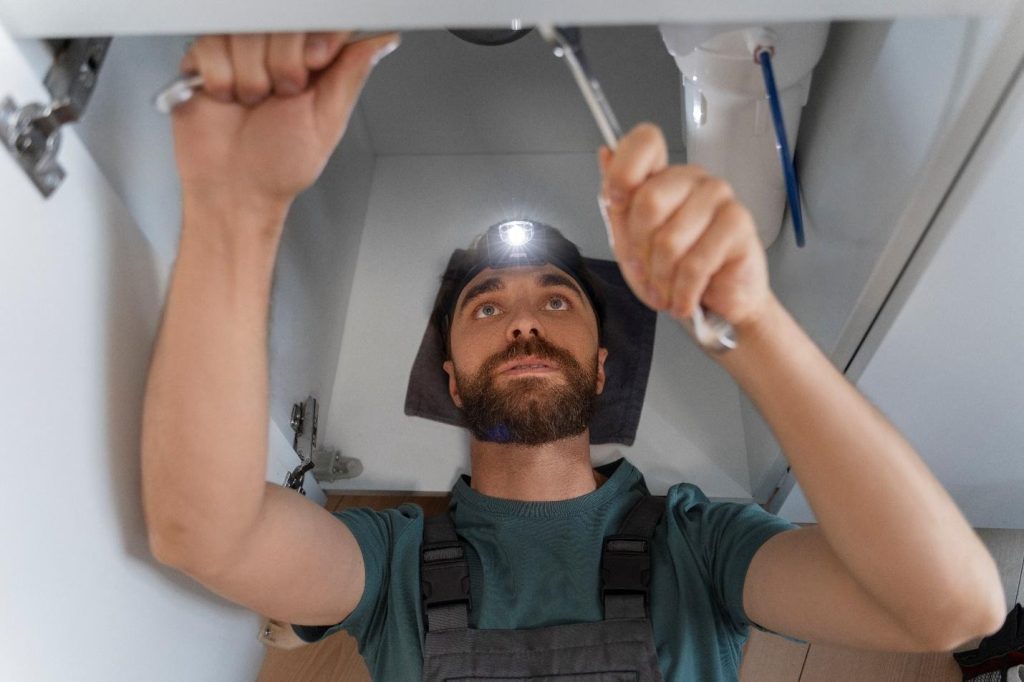The lack of proper visual tools translates into no thorough pipe inspection, and every plumber knows this. However, it makes little logistical sense to use high-end cameras when a simple one can get the job done. This makes it important to know when to use a borescope inspection camera and when to upgrade to a pan and tilt pipe camera for accurate and efficient pipeline diagnostics.
Pipe inspections rely heavily on visual tools, but not all camera systems are built alike. This makes it essential for technicians and plumbers to know the key differences between the different camera systems, such as borescopes and pan and tilt systems, and which tool is the right fit for their current job.
If you are a plumber or technician, here’s your guide to learning which camera tool is right for your job and how you can decide between a borescope inspection camera and a pan and tilt pipe camera.
What Are Pipe Inspection Cameras?
Pipe inspection cameras are visual inspection devices that usually come with a scope, wiring, and a screen, and are used to get a view of the inside of a drainage line. The most common applications of pipe inspection cameras include sewer systems, industrial plants, HVAC, and water mains.
Drainage lines often get clogged due to solid waste entering them. Bigger pipelines often have roots, mud, and debris choking them. But how do you learn why the water is not flowing through the drainage line as expected? And more importantly, where does the source of the problem lie? The answer to all of these is a pipe inspection camera.
The importance of choosing the right camera system for your next pipe inspection is as follows:
- Better accessibility and view with the right wire length, camera head type, and viewing angle.
- Being able to get proper visuals with necessary lighting, resolution, stabilization, focus, and zoom.
- Diagnostic features such as recording and playback, sensors, and self-leveling of the camera.
- Durability of the camera system.
Based on the devices available in the market, two of the most effective devices are the borescope inspection camera and the pan and tilt pipe camera.
Borescopes: Simple, Flexible, and Compact
These optical instruments offer non-destructive visual inspection of the insides of not only pipelines but also machinery and other enclosed spaces. The borescope inspection camera comes with a lens plus a lighting system on one end and a display screen on the other.
They are narrow, and either rigid or semi-flexible (built with fibre optics), with the lens and lighting system offering visibility of the issue (clog) inside the pipeline. These are ideal for small-diameter or short-length pipelines. Borescopes are also fairly lightweight, affordable, and easy to operate, which makes them a popular choice for plumbers.
However, the viewing angle, depth, and direction control offered by these devices is limited.
Pan and Tilt Camera Systems: Efficient Control and Coverage
Pan and tilt pipe cameras are equipped with robotic or motorized parts that allow the camera to tilt, rotate, swivel, and zoom. Thus, they allow operators to pan 360°, tilt vertically for full inspection, and zoom in on minute details.
However, they are bigger and bulkier than borescopes and ideal for large-diameter, longer, or complex pipelines. Further, pan and tilt cameras cost more and have a complicated setup. Thus, it is important to have trained personnel and set up time before use.
Comparing the Borescope with the Pan and Tilt Inspection Camera
The following table can be an excellent aid in understanding the features of both the borescope inspection camera and the pan and tilt pipe camera.
| Feature | Borescope Inspection Camera | Pan and Tilt Pipe Camera |
| Pipe Size Suitability | Small to Medium | Medium to Large |
| Viewing Angle | Fixed | Adjustable |
| Range | Short (<10m) | Long (up to 300m) |
| Control | Manual | Motorized |
| Cost | Low | High |
| Image Quality | Basic | HD / 4K |
Table: Comparison Between Borescope Inspection Camera and Pan and Tilt Pipe Camera
Choosing the Pipe Inspection Camera for the Job
When selecting the pipe inspection camera, factor in the following:
- The pipe diameter, length, material, and bends
- Whether you are looking for a quick diagnosis or a detailed assessment.
- The environment in which you need to deploy the camera, i.e., water, oil, blockages, etc.
- The performance and features of the camera.
- If the contents of the pipeline are corrosive or hazardous.
Based on this, you can decide which camera systems are the best for the job.
Hybrid Camera Systems and Advanced Features
Over time, more products are being launched into the market. Some combine the compact design and flexibility of borescopes with the rotational control and high-resolution of a pan and tilt camera.
Further, there are remote control devices that offer wireless controls, real-time video feeds, image storage, and more features, making the inspection and diagnosis easy. Some camera systems can also be integrated with reporting software, which poses significant benefits when used for the inspection of large pipelines and installations.
Thus, as a plumber or technician, it is always a good idea to keep an eye out for the latest tech that can make your work easier.
Wrapping Up
Borescope inspection cameras are ideal for quick, narrow inspections, while pan and tilt pipe camera systems offer precise, comprehensive views of complex pipelines. Though both are useful, selecting the right tool depends on your project scope and clarity requirements.
Pipe Inspections Made Easy With a Camera Set
Need help choosing the right inspection camera for your next pipeline job? Check your scope of work and then select a camera set that suits your needs.

